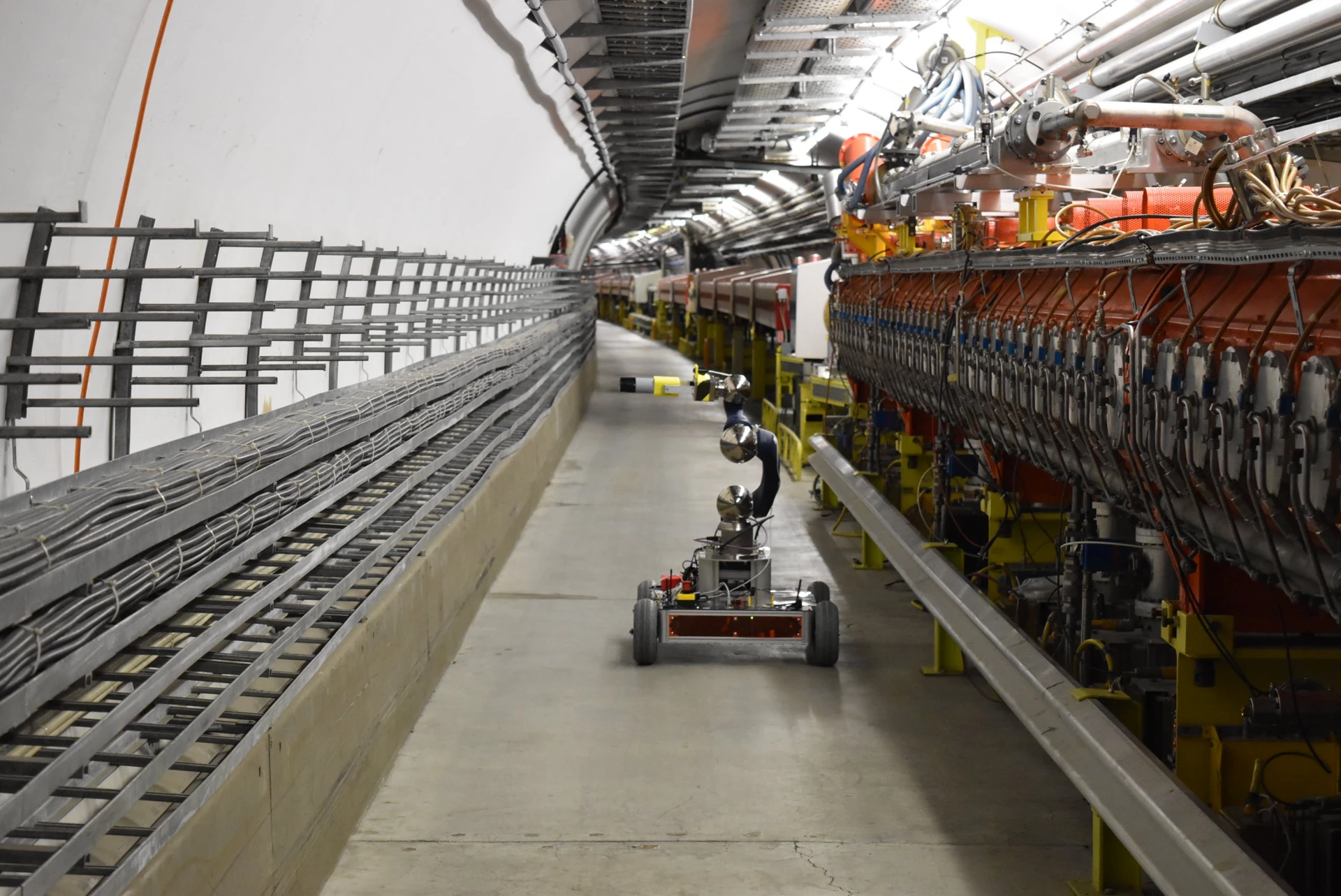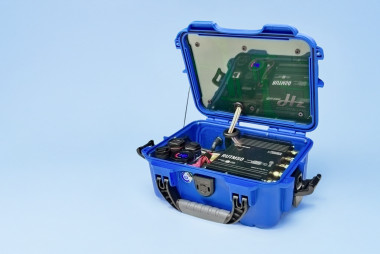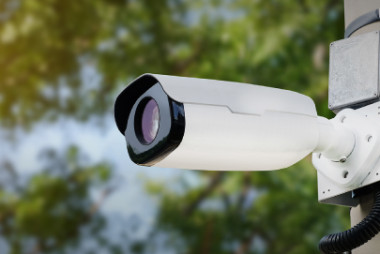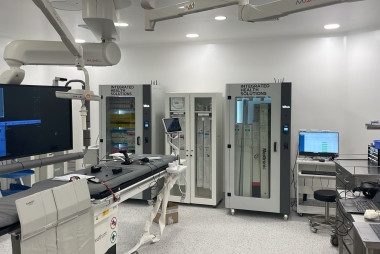HIGHLIGHTS
✔ CERN needed a versatile connectivity device that would allow its multitasker CERNbot to connect to an extensive range of devices using different interfaces.
✔ It chose our RUT956, primarily due to its numerous I/Os that match the level of adaptability CERBbot operates with
✔ Its industrial design, built-in security features, and the ability to connect CERNbot to CERN’s internal network add to RUT956 being a suitable, integral core of this highly-adaptable solution.
THE CHALLENGE – ADAPTABILITY OVER SPECIALIZATION
The European Organization for Nuclear Research, or CERN for short, carries out research in a myriad of complex ways. Many of them involve tasks that cannot be performed by human hands due to hazards inherent to the experiments, such as ionization radiation. In theory, CERN could favor specialization and develop a fleet of specialized robots to perform those tasks, each one dedicated to solving a particular task. But CERN isn’t synonymous with innovation because of a low-hanging-fruit approach to problem-solving (or creating tiny black holes and changing the timeline, for that matter). Rather, because it aims for the fruit at the top of the tree – the one that’s harder to get to but is all the better for it.
In practice, this means creating a robot that’s compatible with many different “add-ons,” allowing it to easily and quickly shift from one task to another and serve as something of a Swiss army knife. Such a robot was indeed created, and it goes by the name: CERNbot.
However, to perform its many tasks, CERNbot must be able to communicate with and relay data from many different devices via many different interfaces. In other words, it cannot operate at maximum adaptability if its connectivity capabilities aren’t equally adaptable. How did CERN solve this issue?
TOPOLOGY
THE SOLUTION – A CORE CONNECTIVITY
When maximizing CERNbot’s connectivity capabilities, CERN chose our RUT956 cellular router to be part of its core and help it integrate with an extensive roster of devices. This allows CERNbot to perform a long list of research tasks, including sample extraction, installation, reverse engineering, milling, lifting, quality control, chemical monitoring, and more.
These are all achieved in no small part thanks to RUT956’s numerous I/Os, which raise the number of interfaces CERNbot can integrate with and devices thereof. In addition, this router provides a reliable and secure connection between CERNbot and CERN’s internal network, which stores all data CERNbot collects and is how scientists control it and get real-time critical statuses, such as its battery voltage.
Dual-SIM functionality, low power consumption, built-in VPN and other security features, and industrial design all make RUT956 suitable for the different hazardous environments CERNbot operates in and helps it make science happen routinely and efficiently.
Featured product
RUT9564G LTE (Cat 4), 3G, 2G
With auto failover, backup WAN and other switching scenarios
Ethernet, Serial (RS232, RS485) and multiple Inputs/Outputs
Global Navigation Satellite System for location services and time synchronization










